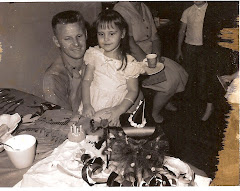
We've always been told that we were mix't. Court documents filed in Randolph County, North Carolina explicitly spelled out how mix't we were, but they didn't leave hints on what the true origins of our family were.
William Goyens Jr. of Nacogdoches was born in 1794 in Moore County, North Carolina. His sister Leah Goings was born in 1790. William Goyens Jr. left Moore County in the 1820's and came to Texas were he was captured twice as bounty hunters tried to pass anyone of dark complection off for slaves. He stood before the Republic of Texas Legislature and stated "Unfortunately I am a man of color . . .", but he never claimed African-American ancestry.
Being descended from this family, we were always aware of admixture. It was the way society treated the Goinses from Moore County, North Carolina and one of the reasons so many pulled up stakes to seek a better life out West - a life free from the prejudices and discriminations of a harsh and judgmental society. The family who remained in North Carolina stuck together and was considered clannish. They lived on the fringes of town. They kept among themselves. They were buried together out in woods, not being acceptable, even in death to rest among society.
So what's the story? Our elders didn't talk about it. To talk about it often meant being deprived of rights such as land ownership, the right to own guns or the right to vote. They were even deprived of the right to choose who they could legally marry. So they kept the secrets of our heritage and carried the knowledge with them to their unmarked graves.
When my father decided to have our DNA tested, we knew the blood would reveal many of those secrets and we were ready to embrace the TRUTH, no matter how many surprises it might hold. We had some family tales and remembrances, but not enough to understand who we were and what stories were true and which ones were created by a biased society with tunnel vision. My father is four generations from William Goyens Jr and his great-great-great grandmother Leah Goins. His DNA results were:
91% European
9% Native American
0% Sub-Saharan African
0% East Asian
So the test results prove that the family who remained in North Carolina and were known as Croatan Indians did retain some of their cultural identity, and Goyens who traveled to a land where he was 'different' could only be labeled as a 'runaway slave' and that became engraved on his final resting place by the Texas Historical Commission and related in biographies long after his death.
Goyens was considered remarkable enough to have his final resting place honored by the Texas Historical Commission (although the historical information on the marker was riddled with errors). A final dishonor was when some entity from Nacogdoches moved the marker from the site to the side of the road on Goyens Hill, leaving Goyens' grave unmarked and in danger of being lost forever. I have repeatedly asked for answers and help from the East Texas Historical Association to rectify this mistake, but none feel the issue is important or that their account of Goyens should be corrected and preserved.




